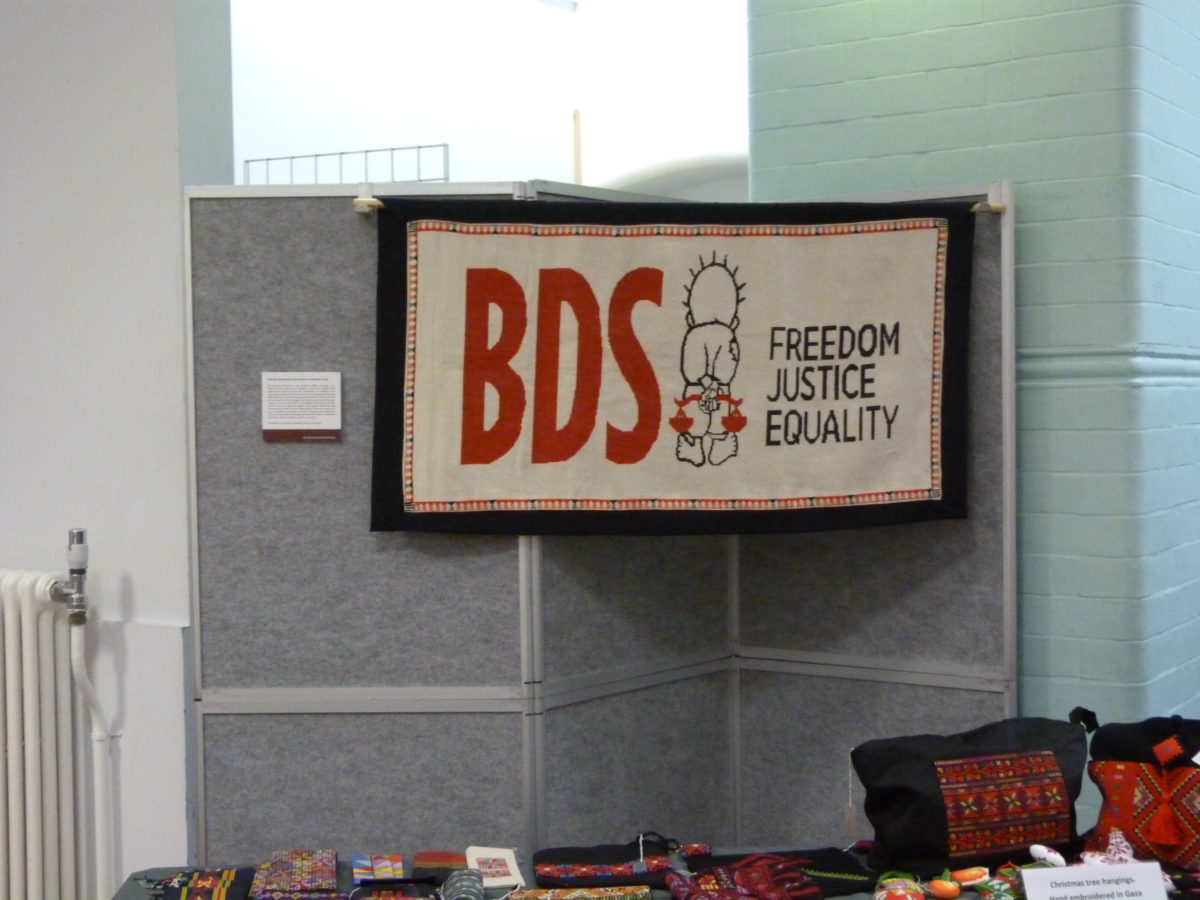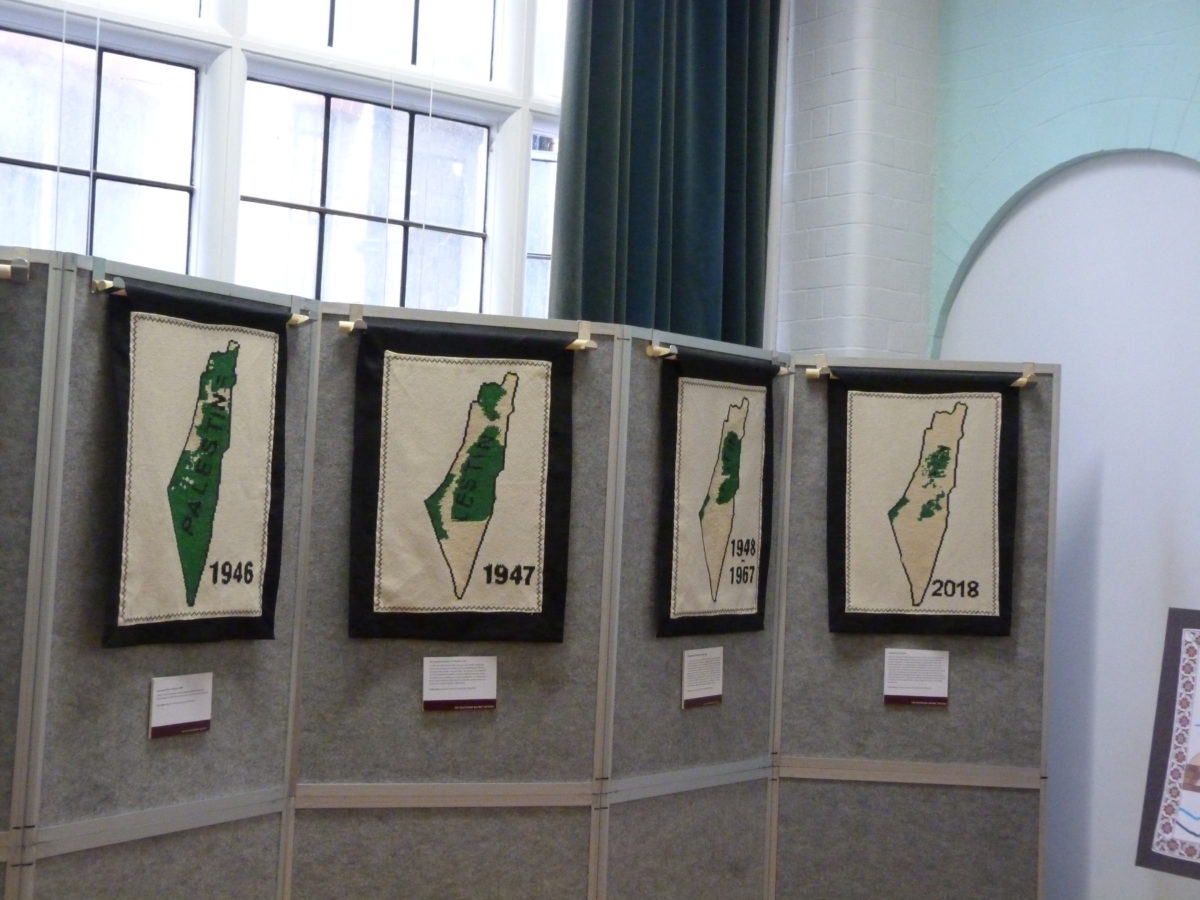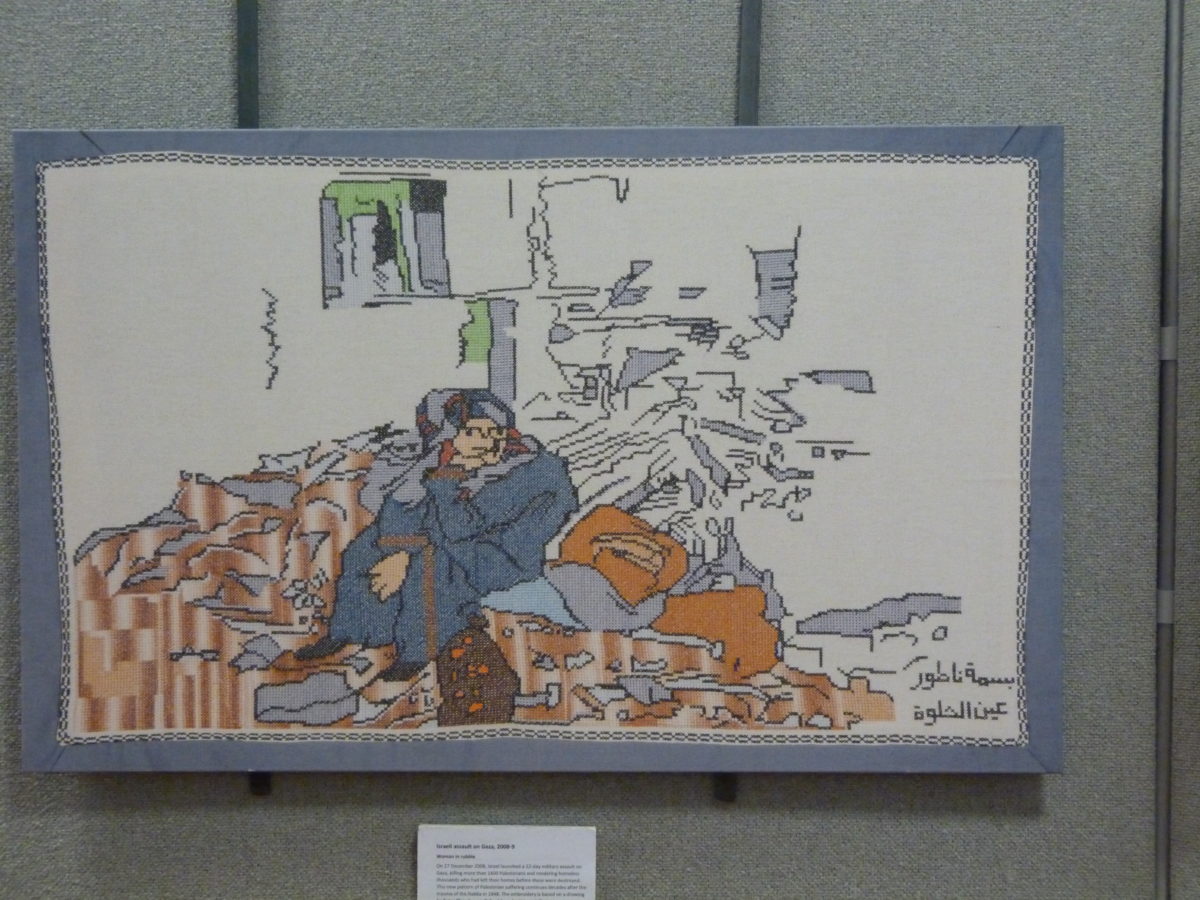OXFORD TOWN HALL 24-28 September 2021
This exhibition was meant to take place 18 months ago but was postponed because of the pandemic. It was organised jointly between the Palestinian History Tapestry Project (PHT), and Oxford Ramallah Friendship Association (ORFA).

The project has been in existence for about 10 years, it is modelled on one developed by local weavers in South Africa that ended up being hung in their Parliament, after majority rule was achieved. Both were initiated by two people in Oxford, Jan and Iain Chalmers, who have a very long association with Gaza. The aim of this was to be hung in a Palestinian Parliament.
It was opened by Oxford’s Deputy Mayor, Steve Goddard, who said that this was the right place for the exhibition because of Oxford’s Twinning with Ramallah in the West Bank. At the opening ceremony Jehan Alfarra (raised in Gaza), co-chair of the tapestry project, explained how it was made by refugees, in the West Bank, Gaza, and Lebanon. An ORFA representative explained that in their solidarity trips the role of embroidery in Palestinian life was clear.
The central role it played in the Al Amari Camp Women’s Centre was an example. Avi Schlaim, who is patron of both ORFA, and PHT, explained the present situation for Palestinians was dire. He said that they had been deserted by Arab states and that the Palestinian Authority was opposed by Palestinians, a recent poll in the West Bank, had shown 82% did not support it. He said they needed civil society support as these two organisations, ORFA and PHT, demonstrated and through campaigns such as BDS (Boycott, Disinvest and Sanctions).

The tapestry has more than a 100 panels, there were 37 in this exhibition. All the panels can be seen on PHTs website. The panels that were stitched in Al Amari Camp in Ramallah, were the originals, the rest were high quality copies because of security concerns.

Disappearing Palestine 
Crusaders 
Bombed house
They cover 4,000 years of Palestinian history, If you want details of the older periods see Nur Masalha ‘Palestine A Four Thousand Year History’. There are panels representing archaeological finds, from the Neolithic Period through to the Roman Period and then from the Byzantine period to the Ottoman Empire. There are amazing panels on the crusades, for example.
This led up to the Balfour Declaration and the Palestinian revolt of 36-39.
We see panels on:
- the creation of Israel and the ethnic cleansing
- the isolation of Gaza,
- attacks on fisher people
- checkpoints
- panels on the bombing of Gaza
- the shootings at the border
- imprisonment
The combination of the Tapestry and the history of Palestine is a powerful method of telling this story. Many people think the idea of Palestine is new, that this was a land without people, but the 4,000 year history gives a lie to this.
If this exhibition comes to your area, it is worth going to, the panels are amazing when you see them live and close up. If you go to the Bayeux Tapestry there is the same effect, except this is a tapestry of the oppressed by the oppressed.
If you are interested in the work of the Palestinian History Tapestry Project, please visit their Website, similarly Oxford Ramallah friendship Association, which is part of the National Twinning Network.
Art Book Review Books Capitalism China Climate Emergency Conservative Government Conservative Party COVID-19 Creeping Fascism Economics EcoSocialism Elections Europe Event Video Far-Right Fascism Film Film Review France Gaza Global Police State History Imperialism Israel Italy Keir Starmer Labour Party London Long Read Marxism Marxist Theory Migrants NATO Palestine pandemic Protest Russia Solidarity Statement Trade Unionism Trans*Mission Ukraine United States of America War

